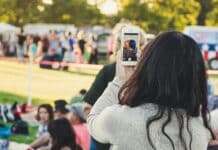About the Youth Exchange
The Erasmus+ Youth Exchange “I want (you)th” hosted by Associazione No Borders, gathered 25 young people aged 14-18 years old and 7 youth leaders from 5 countries – Italy, Bulgaria, Slovakia, Spain and Albania. The project about volunteering, active participation and opportunities for and by young people took place in the scenic Ostello Parco Monte Barro in Galbiate, Italy from 18th to 26th September.
During 7 days of non formal education activities the participants had an opportunity to:
- learn about active participation, involvement, the difference between volunteering and activism, as well as different volunteering opportunities in local, national and European levels, such as European Solidarity corps international volunteering activities, Erasmus+ and others.
- increase transversal skills, especially various soft skills related to communication, problem solving, time and resource management etc.
- reflect on the personal contribution they make and can make to society through volunteering and social dialogue and the possible use of social media for raising awareness of and tackling social issues.
This was achieved by the experience of living in a multicultural community, self managed activities and non-formal education activities, like role-plays, discussions, trying out volunteering in practise with association Legambiente Lecco, participants sharing their own experiences (half of the group had previous experience volunteering while others did not), listening to good practise examples for involvement of young people in volunteering activities in Human library, sharing their culture through dances, quizzes and food in intercultural nights and self-organizing activities in the free time.
The results
As a tangible result of the project in one of the sessions devoted to volunteering practise, after getting to know the general goals and approaches of Legambiente Lecco (the manager of the hostel where the project was hosted), participants created upcycled items useful in the daily life of the hostel and the organization, such as a sign with the name of the hostel, a birds house, holders for cutlery and pencils and a clothes hanger.
Within the project various artistic tools were used, such as theatrical performances, representing practical volunteering examples, comics creation for active youth participation processes, drawing posters for explanation of European opportunities – Erasmus+ Youth exchanges, European Solidarity corps volunteering activities and solidarity projects and DiscoverEU, as well as photos and videos.
During the mobility activity participants also created ideas for volunteering activities about topics that they care deeply about and find problematic, which they could do when returning back home, for example:
- providing activities of clothes swap every season, as well as informative campaigns focusing on the problem of fast fashion, targeting in particular young people
- organizing conferences in schools and youth centers addressing the problem of fake news and misinformation, raising media literacy of their peers.
Results from impact assessment questionnaire, which was given to all participants on the first and the last day of the exchange showed a visible increase in understanding the differences between volunteering and activism, a smaller, but still significant increase in awareness of the diverse opportunities for volunteering (at a local, national, European and international level), awareness of what are the social issues participants as individuals are mostly interested in and that I would like to address as a volunteer as well as awareness of the impact of volunteering and active participation for the society.
The voices of the participants
But what could better describe the project than the participants themselves – a few days after the project, when asked about their experience, Miriam from Italy shared that “The topic was so useful because now I know how to find opportunities on the specific topics. The thing I liked the most is learning about other people’s experience. The most challenging moments were trying to create a plan that everyone liked with all or most of the ideas that we came up with. The happiest moments were dancing in the auditorium or dancing while we were doing the dishes or even cooking”.
Mario (Spain) says “I learned a lot about expressing myself although it was more difficult because I used a different language. I also learned that sometimes I need my space and socializing all the time is really tiring. I imagined that the most distant countries would have many differences but I saw that we are really similar in all the aspects. And I learn many things like dances, new words and expressions from the rest of the countries and that’s funny. I went to the project with a small idea about volunteering and activism and I return home with a lot of examples, ways, and ideas to contribute to our planet and society.”
Kalina (Bulgaria) says: “During the project, I learned that living in a community is hard but not impossible when you work as a group in the activities and outside. I learned that it’s important to be an active participant in the community you live in not only for your own personal growth but also for the environment. One of the most challenging things I did was to break loose around the participants and during the activities, but in the end, everything just became easier, and the talk went smoother. Some of the activities were definitely more daring as they were connected with topics most of us weren’t that familiar with. Even though it was hard, the experience I got from it was something you can’t just find anywhere and the friendships you make along the way are the ones that will stay with you for the rest of your life. I got to experience other cultures, and I think that the cultural nights were my favorite. In the end, I can say that the experience I got from the project has definitely made a change in me, and I’ll definitely out for other projects.”
More thoughts about the project can be seen also in this video, created by the participants on the last day of the project activity.




